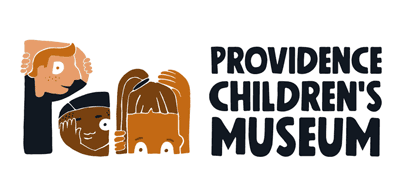Building a Bridge
(FOCUS: Grade 2, Science)
Students will use a QR code to access Google Earth to view a slideshow showing several bridges around the world and in Rhode Island. Accompanying each bridge shown in 3D there is an inset that shows different views and explains the bridge. After this, students begin the challenge: use information learned about the properties of solids and apply that to building a bridge for a toy car that is 12 inches in height and has an 18-inch span that will support a toy car as it crosses the bridge without crumbling. They will work in pairs to strengthen their communication and collaboration skills.
Materials to gather
- Toy cars (1 per pair)
- Styrofoam trays
- Balsa wood lengths
- Cardboard
- Construction paper
- Straws
- Pipe cleaners
- String
- Copy paper
- Tape
- Glue
- Popsicle sticks
- Boxes
- Empty paper towel and/or toilet paper tubes
Set Up
- Students should have desk/table space or floor space with sufficient room to work in 360 degrees of their bridge.
- Materials are set up on a table that is easily accessible for all students
Student’s Job
Build a bridge using materials found on the table. It must support a toy car on the span without collapsing. The bridge must be 12 inches in height and have an 18 inch span for the car to cross. Think about the properties of solids as you decide how to construct the bridge.
1. Properties of solids anchor chart for reference
2. Discuss the pros and cons of using certain materials.
3. Construct and test the bridge
Further Challenges:
Have students decide on a name for their bridge and write a press release about the new bridge. They then act as a television news anchor and read their press release.
Teacher’s Job
Standards Alignment
RICCSS – Rhode Islande Common Core State Standards
SCIENCE
K-2-ETS1-2.
Develop a simple sketch, drawing, or physical model to illustrate how the shape of an object helps it function as needed to solve a given problem.
SPEAKING AND LISTENING
2.SL.4:
Tell a story, recount an experience, or explain how to solve a mathematical problem with appropriate facts and relevant descriptive details; speaking audibly in coherent sentences and using appropriate vocabulary.
SOCIAL EMOTIONAL LEARNING – RI Social Emotional Learning Standards
4A
Use communication and interpersonal skills to interact effectively with others, including those with diverse backgrounds, cultures, abilities.
Prepare/ Background Info
- Students use information learned during the states of matter unit how to think critically about how to use materials based on the properties of solids.
- Create, if not already created, an anchor chart the lists the properties of solids and the definitions so students have a quick reference chart as they discuss which materials should be used to construct a bridge and why with his/her partner.
- QR codes take students to the slideshow created by the teacher of some famous bridges around the world and some bridges students use in their state accessing Google Earth; i.e. Golden Gate Bridge, Brooklyn Bridge, Washington Bridge, George Washington Bridge, Claiborne Pell Bridge, Jamestown Bridge, Zakim Bridge
- Task card with the instructions and particulars for the height and length of the bridge
Effective Facilitation Strategies
- Teacher has taught the students the properties of solids and created an anchor chart for easy reference as needed.
- Teacher walks around observing the interactions of the students, questions being asked, answers being given, which materials are being used.
- Reminders about taking turns talking, giving reasons why they chose a particular material, being kind and collaborative with partner.
Play to Notice (Learning Framework)
- Notice which materials students are choosing and how they are using them. What do they do when they encounter a problem with their idea?
- Do they persevere? Do they try other materials?
- Do they talk with another student and work through problems or ideas?
- Are they speaking audibly to their peer(s)?
Content Matter to Notice
- Notice which materials students are using and how they are integrating different materials to create stronger, more stable materials to accomplish their task.
- Notice which tools are being used to ensure the bridge meets the requirements for the task.
SEL to Notice
- Notice how students are interacting with each other, the communication styles, the ability to listen effectively and discuss ideas.
- Notice how they figure out how to compromise or decide whose idea to try.
- Notice how they deal with frustrations when their ideas do not work.

